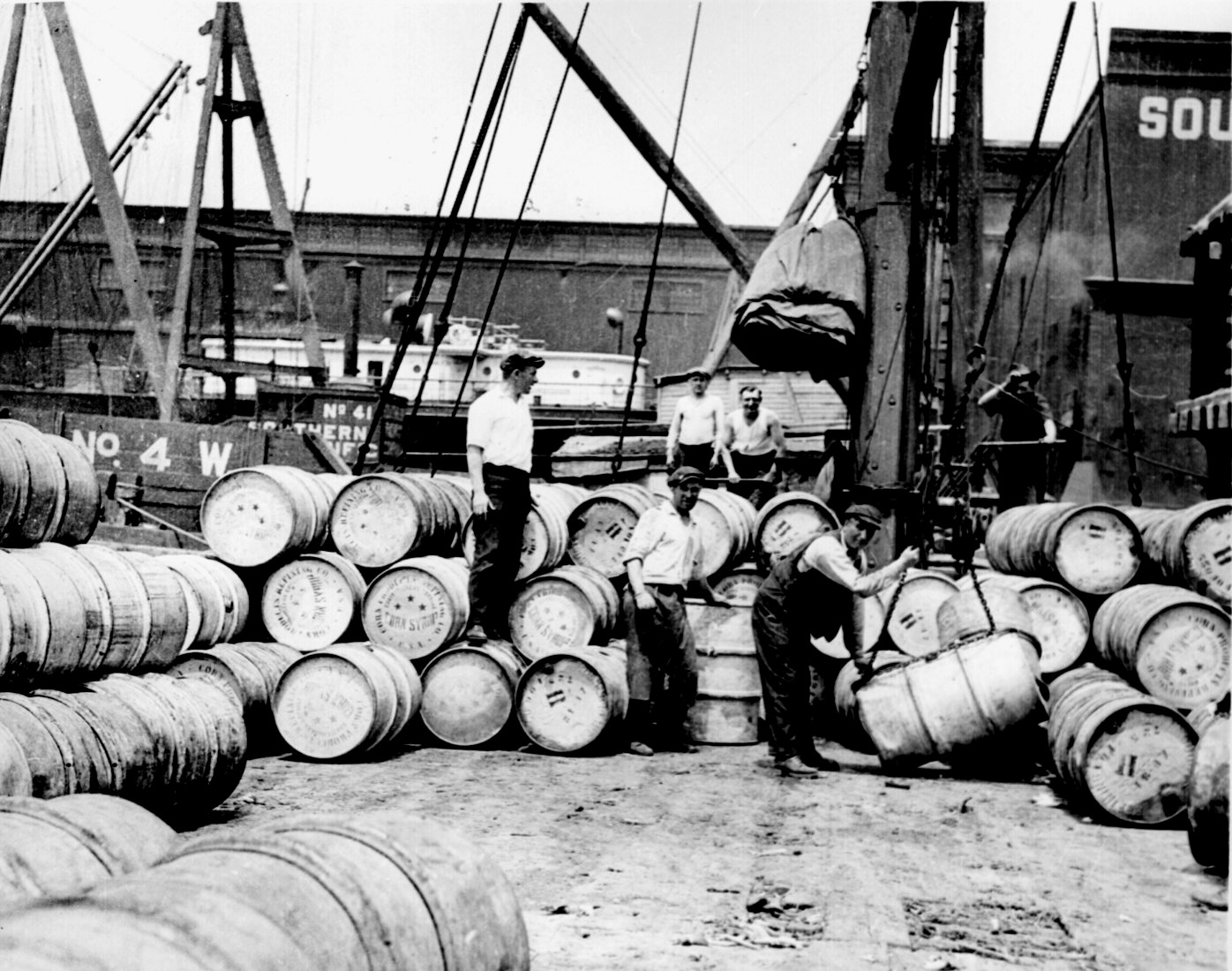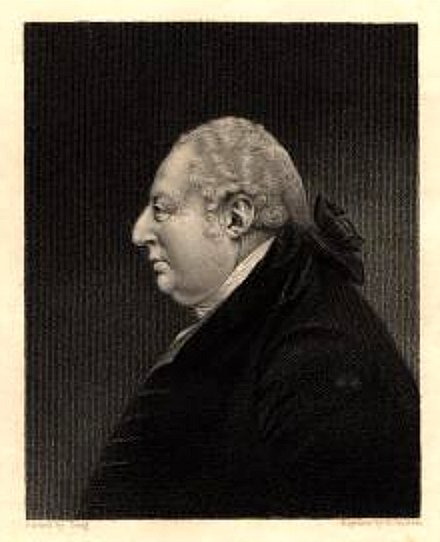|
Containerization
Containerization is a system of intermodal freight transport using intermodal containers (also called shipping containers and ISO containers). Containerization is also referred as "Container Stuffing" or "Container Loading", which is the process of unitization of cargoes in exports. Containerization is the predominant form of unitization of export cargoes, as opposed to other systems such as the barge system or palletization. The containers have standardized dimensions. They can be loaded and unloaded, stacked, transported efficiently over long distances, and transferred from one mode of transport to another—container ships, rail transport flatcars, and semi-trailer trucks—without being opened. The handling system is completely mechanized so that all handling is done with cranes and special forklift trucks. All containers are numbered and tracked using computerized systems. Containerization originated several centuries ago but was not well developed or widely applied ... [...More Info...] [...Related Items...] OR: [Wikipedia] [Google] [Baidu] |
Intermodal Container
An intermodal container, often called a shipping container, is a large standardized shipping container, designed and built for intermodal freight transport, meaning these containers can be used across different modes of transport – from ship to rail to truck – without unloading and reloading their cargo. Intermodal containers are primarily used to store and transport materials and products efficiently and securely in the global containerized intermodal freight transport system, but smaller numbers are in regional use as well. These containers are known under a number of names. Based on size alone, up to 95% of intermodal containers comply with ISO standards, and can officially be called ISO containers. Many other names are simply: container, cargo or freight container, shipping, sea or ocean container, container van or sea van, sea can or C can, or MILVAN, SEAVAN, or RO/RO. The also used term CONEX (Box) is technically incorrect carry-over usage of the name of an importa ... [...More Info...] [...Related Items...] OR: [Wikipedia] [Google] [Baidu] |
Container Ship
A container ship (also called boxship or spelled containership) is a cargo ship that carries all of its load in truck-size intermodal containers, in a technique called containerization. Container ships are a common means of commercial intermodal freight transport and now carry most seagoing non-bulk cargo. Container ship capacity is measured in twenty-foot equivalent units (TEU). Typical loads are a mix of 20-foot (1-TEU) and 40-foot (2-TEU) ISO-standard containers, with the latter predominant. Today, about 90% of non-bulk cargo worldwide is transported by container ships, and the largest modern container ships can carry up to 24,000 TEU (e.g., '' Ever Ace''). Container ships now rival crude oil tankers and bulk carriers as the largest commercial seaborne vessels. History There are two main types of dry cargo: bulk cargo and break bulk cargo. Bulk cargoes, like grain or coal, are transported unpackaged in the hull of the ship, generally in large volume. Break-bulk ... [...More Info...] [...Related Items...] OR: [Wikipedia] [Google] [Baidu] |
Intermodal Freight Transport
Intermodal freight transport involves the transportation of freight in an intermodal container or vehicle, using multiple modes of transportation (e.g., rail, ship, aircraft, and truck), without any handling of the freight itself when changing modes. The method reduces cargo handling, and so improves security, reduces damage and loss, and allows freight to be transported faster. Reduced costs over road trucking is the key benefit for inter-continental use. This may be offset by reduced timings for road transport over shorter distances. Origins Intermodal transportation has its origin in 18th century England and predates the railways. Some of the earliest containers were those used for shipping coal on the Bridgewater Canal in England in the 1780s. Coal containers (called "loose boxes" or "tubs") were soon deployed on the early canals and railways and were used for road/rail transfers (road at the time meaning horse-drawn vehicles). Wooden coal containers were first used on the ... [...More Info...] [...Related Items...] OR: [Wikipedia] [Google] [Baidu] |
Semi-trailer Truck
A semi-trailer truck, also known as a semitruck, (or semi, eighteen-wheeler, big rig, tractor-trailer or, by synecdoche, a semitrailer) is the combination of a tractor unit and one or more semi-trailers to carry freight. A semi-trailer attaches to the tractor with a type of hitch called a fifth wheel. Regional configurations Europe The noticeable difference between tractor units in Europe and North America is that almost all European models are cab over engine (called "forward control" in the UK), while the majority of North American trucks are "conventional" (called "normal control" or "bonneted" in the UK). European trucks, whether straight trucks or fully articulated, have a sheer face on the front. This allows shorter trucks with longer trailers (with larger freight capacity) within the legal maximum total length. Furthermore, it offers greater maneuverability in confined areas, a more balanced weight-distribution, and better overall view for the driver. Th ... [...More Info...] [...Related Items...] OR: [Wikipedia] [Google] [Baidu] |
Break Bulk Cargo
In shipping, break-bulk, breakbulk, or break bulk cargo, also called general cargo, refers to goods that are stowed on board ship in individually counted units. Traditionally, the large numbers of items are recorded on distinct bills of lading that list them by different commodities. This is in contrast to cargo stowed in modern intermodal containers as well as bulk cargo, which goes directly, unpackaged and in large quantities, into a ship's hold(s), measured by volume or weight (for instance, oil or grain). The term ''break-bulk'' derives from the phrase breaking bulk, a term for unloading part of a ship’s cargo, or commencing unloading the cargo. Ships carrying break-bulk cargo are often called general cargo ships. Break-bulk/general cargo consists of goods transported, stowed and handled piecemeal to some degree, typically bundled somehow in unit loads for hoisting, either with cargo nets, slings, or crates, or stacked on trays, pallets or skids. Furthermore, batches ... [...More Info...] [...Related Items...] OR: [Wikipedia] [Google] [Baidu] |
Rail Transport
Rail transport (also known as train transport) is a means of transport that transfers passengers and goods on wheeled vehicles running on rails, which are incorporated in tracks. In contrast to road transport, where the vehicles run on a prepared flat surface, rail vehicles (rolling stock) are directionally guided by the tracks on which they run. Tracks usually consist of steel rails, installed on sleepers (ties) set in ballast, on which the rolling stock, usually fitted with metal wheels, moves. Other variations are also possible, such as "slab track", in which the rails are fastened to a concrete foundation resting on a prepared subsurface. Rolling stock in a rail transport system generally encounters lower frictional resistance than rubber-tyred road vehicles, so passenger and freight cars (carriages and wagons) can be coupled into longer trains. The operation is carried out by a railway company, providing transport between train stations or freight customer faci ... [...More Info...] [...Related Items...] OR: [Wikipedia] [Google] [Baidu] |
Globalization
Globalization, or globalisation (Commonwealth English; see spelling differences), is the process of interaction and integration among people, companies, and governments worldwide. The term ''globalization'' first appeared in the early 20th century (supplanting an earlier French term ''mondialization''), developed its current meaning some time in the second half of the 20th century, and came into popular use in the 1990s to describe the unprecedented international connectivity of the post-Cold War world. Its origins can be traced back to 18th and 19th centuries due to advances in transportation and communications technology. This increase in global interactions has caused a growth in international trade and the exchange of ideas, beliefs, and culture. Globalization is primarily an economic process of interaction and integration that is associated with social and cultural aspects. However, disputes and international diplomacy are also large parts of the history of globa ... [...More Info...] [...Related Items...] OR: [Wikipedia] [Google] [Baidu] |
Flatcar
A flatcar (US) (also flat car, or flatbed) is a piece of rolling stock that consists of an open, flat deck mounted on a pair of trucks (US) or bogies (UK), one at each end containing four or six wheels. Occasionally, flat cars designed to carry extra heavy or extra large loads are mounted on a pair (or rarely, more) of bogies under each end. The deck of the car can be wood or steel, and the sides of the deck can include pockets for stakes or tie-down points to secure loads. Flatcars designed for carrying machinery have sliding chain assemblies recessed in the deck. Flatcars are used for loads that are too large or cumbersome to load in enclosed cars such as boxcars. They are also often used to transport intermodal containers (shipping containers) or trailers as part of intermodal freight transport shipping. Specialized types Aircraft parts flatcars Aircraft parts were hauled via conventional freight cars beginning in World War II. However, given the ever-increasing siz ... [...More Info...] [...Related Items...] OR: [Wikipedia] [Google] [Baidu] |
Worsley
Worsley () is a village in the City of Salford, Greater Manchester, England, which in 2014 had a population of 10,090. It lies along Worsley Brook, west of Manchester. Within the boundaries of the historic county of Lancashire, there is evidence of Roman and Anglo-Saxon activity, including two Roman roads. The completion in 1761 of the Bridgewater Canal allowed Worsley to expand from a small village of cottage industries to an important town based upon cotton manufacture, iron-working, brick-making and extensive coal mining. Later expansion came after the First and Second World Wars, when large urban estates were built. Worsley Delph is a scheduled monument and a significant part of the town's historic centre is now a conservation area. History Toponymy Worsley is first mentioned in a Pipe roll of 1195–96 as ''Werkesleia'', in the claim of a Hugh Putrell to a part of the fee of two knights in nearby Barton-upon-Irwell and Worsley. There are many variations on the ... [...More Info...] [...Related Items...] OR: [Wikipedia] [Google] [Baidu] |
Bridgewater Canal
The Bridgewater Canal connects Runcorn, Manchester and Leigh, in North West England. It was commissioned by Francis Egerton, 3rd Duke of Bridgewater, to transport coal from his mines in Worsley to Manchester. It was opened in 1761 from Worsley to Manchester, and later extended from Manchester to Runcorn, and then from Worsley to Leigh. The canal is connected to the Manchester Ship Canal via a lock at Cornbrook; to the Rochdale Canal in Manchester; to the Trent and Mersey Canal at Preston Brook, southeast of Runcorn; and to the Leeds and Liverpool Canal at Leigh. It once connected with the River Mersey at Runcorn but has since been cut off by a slip road to the Silver Jubilee Bridge. Following the re-routing of roads to the Silver Jubilee Bridge, the Runcorn Locks Restoration Society campaigns to reinstate the flight of locks. The Bridgewater canal is described as the first great achievement of the canal age, although the Sankey Canal opened earlier. Bridgewater capture ... [...More Info...] [...Related Items...] OR: [Wikipedia] [Google] [Baidu] |
Benjamin Outram
Benjamin Outram (1 April 1764 – 22 May 1805) was an English civil engineer, surveyor and industrialist. He was a pioneer in the building of canals and tramways. Life Born at Alfreton in Derbyshire, he began his career assisting his father Joseph Outram, who described himself as an "agriculturalist", but was also a land agent, an enclosure commissioner arbitrating in the many disputes which arose from the enclosures acts, an advisor on land management, a surveyor for new mines and served as a turnpike trustee. In 1792 his neighbour George Morewood died and left his estates to Ellen Morewood. She was mining under Outram land. Over the next nine years the Outrams engaged in a legal battle with her. Land had been sold to them by the Morewoods but Ellen believed that she still had the rights to the coal and ironstone beneath them. James and Benjamin Outram disagreed and they appealed and in 1803 the Lord Chief Justice of the King's Bench, Lord Ellenborough agreed with them. I ... [...More Info...] [...Related Items...] OR: [Wikipedia] [Google] [Baidu] |







